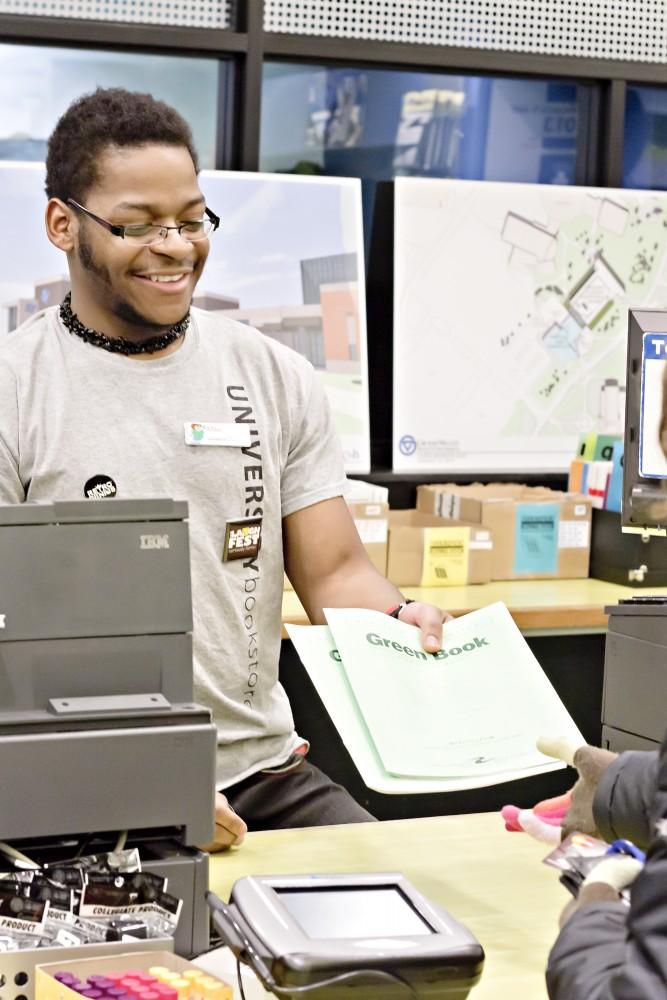Bookstore to no longer supply blue books

GVL / Amanda Greenwood Grand Valley’s bookstore is making the change from Blue Books to Green Books in an attempt to become more environmentally friendly.
Mar 13, 2013
In an effort to be more sustainable, the Grand Valley State University Bookstore is making the switch to supply only green books—instead of both green and blue books—to the student body. This change will take place starting the fall 2013 semester, but the store will be selling blue books until they run out.
“The reason we haven’t stocked just the recycled product in years past is because so many faculty refer to them as blue books,” said Tony Glaab, associate manager at the University Bookstore. “So when students come in and they don’t see a blue book, a lot don’t buy the green book because they don’t want to have the wrong thing when they take a test.”
The difference between green and blue books is that the green books contain a minimum of 30 percent post-consumer waste content such as old magazines, newspapers and office paper, but blue books have no recycled content. “There’s no real advantage to stocking both,” Glaab said. “In fact, I think it’s a little more confusing for students.”
Glaab added that unlike many other “green” products, this doesn’t cost the students more than buying a blue book.
“It only costs us a penny more per book, so we actually retail them at the same price for students,” he said. “A lot of times, environmentally friendly school supplies and other products cost exponentially higher. This is not one of those cases, so we can sell the recycled product at the same price as the non-recycled.”
Student Senate was one of the organizations that asked the bookstore to make the switch. Glaab said the senate’s efforts and many questions from students caused the store to switch to just the recycled material.
“Making this change was simply a matter of asking a question,” said Danielle Meirow, who is on the Senate Diversity Affairs Committee. “I contacted the manager of the bookstore, Jerrod Nickels, and asked why we supplied both if we were charging the same price for each. From there he actually did most of the work. He researched it with their supplier and made the decision to phase out blue books.”
Lindsay Viviano, vice president of the Public Relations Committee, said making the switch to just selling green books goes along with GVSU’s goal of sustainability.
“Seeing as Grand Valley is one of the top ‘green’ universities within the Midwest, it only seems natural that GVSU makes a complete switch to green books. Especially in the fact that it is a sustainable initiative that costs no more than the blue books,” she said. “Overall, I think it’s great for the student body because it spreads the awareness of being more sustainable in their everyday lives.”
The main goal for the bookstore and Student Senate is to change the terminology professors use when referring to green books, which would help get rid of the confusion of what a student needs for the class.
“Departments and faculty need to start calling these ‘exam books’ or ‘green books’ moving forward to help alleviate that confusion,” Glaab said.
Meirow added that since both blue and green books serve the same purpose, both are acceptable to use for a class.
“When professors request you to bring an exam booklet to class, it should not matter whether that is a green book or a blue book,” she said.

























